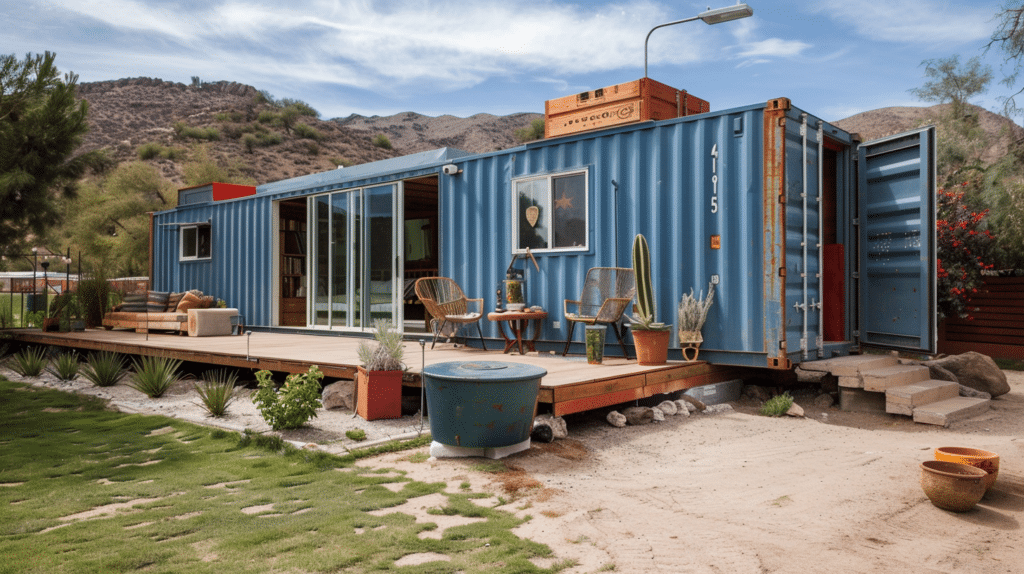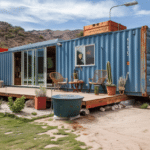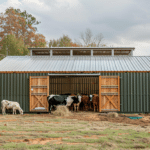Table of Contents
ToggleBuilding a Storage Container House on a Budget: A Comprehensive Guide
In recent years, the concept of building homes out of shipping containers has gained significant popularity due to its affordability, durability, and sustainability. This guide will walk you through the step-by-step process of constructing a cheap shipping container home, covering various aspects including design, structural integrity, insulation, building codes, cost considerations, transportation, construction process, sustainability, and utilities.
Building a storage container house on a budget requires careful planning, resourcefulness, and attention to detail. While the idea of constructing a home out of shipping containers may seem cost-effective, there are still several factors to consider to ensure that you stay within your budget. In this guide, we’ll explore various strategies to help you build a storage container house without breaking the bank.
Plan, Plan, and Plan Some More
The key to building a storage container house on a budget is thorough planning. Start by outlining your goals, budget, and timeline for the project. Consider factors such as the size and layout of the house, the number of containers needed, and any additional features or amenities you want to include. Create a detailed construction plan that outlines each step of the process, from site preparation to finishing touches.
Design and Architecture
The first step in building a shipping container home is to design its layout and architecture. Consider factors such as the number of containers needed, their arrangement, and the overall aesthetic you want to achieve. Whether you choose a single-container design or a multi-container layout, ensure that the design optimizes space while fulfilling your functional and aesthetic requirements.
Structural Integrity and Modifications
Before beginning construction, it’s crucial to ensure the structural integrity of the shipping containers. Inspect each container for any signs of damage and reinforce weak areas if necessary. Common modifications include cutting openings for doors and windows, reinforcing walls, and welding containers together to create larger living spaces.
Building Codes and Regulations
Before embarking on your shipping container home project, familiarize yourself with local building codes and regulations. Obtain necessary permits and approvals from the relevant authorities to ensure compliance with safety and zoning requirements. Consulting with a structural engineer or architect can help you navigate these regulations and ensure that your project meets all legal requirements.
Site Preparation and Foundation
Prepare the site for construction by clearing the land and leveling the ground. Depending on the soil conditions and local building codes, you may need to construct a foundation to support the weight of the shipping containers. Options for foundations include concrete slabs, piers, or a combination of both. Ensure that the foundation is properly leveled and anchored to the ground to provide stability for the structure.
Don’t Make Simple Mistakes
Avoiding simple mistakes can help you save time and money during the construction process. Take the time to research local building codes and regulations to ensure compliance. Additionally, carefully inspect each shipping container for damage or structural issues before purchasing. Planning for utilities such as plumbing and electrical wiring in advance can also prevent costly mistakes later on.
Which Containers Are Cheapest?
When sourcing shipping containers for your storage container house, consider purchasing used containers rather than new ones. Used containers are typically cheaper and readily available, but be sure to inspect them thoroughly for any signs of damage or corrosion. Additionally, standard-sized containers (such as 20 or 40 feet long) are more affordable than custom-sized containers.
Choosing Where to Spend Your Money
While building a storage container house on a budget requires cutting costs where possible, there are certain areas where it’s worth investing a little extra money. For example, spending more on high-quality insulation can help you save on energy costs in the long run. Similarly, investing in durable materials for the foundation and roofing can prevent expensive repairs down the line.
Track Every Dollar Spent
Keep track of every dollar spent during the construction process to ensure that you stay within your budget. Create a detailed budget spreadsheet that itemizes expenses for materials, labor, permits, and any other costs associated with the project. Regularly review your budget and adjust as needed to avoid overspending.
Salvage Local Materials
One of the best ways to save money on construction materials is to salvage or repurpose local materials whenever possible. Look for opportunities to source materials such as wood, metal, and stone from salvage yards, demolition sites, or other local sources. Not only will this help you save money, but it can also add unique character and charm to your storage container house.
Insulation and Climate Control
Shipping containers are made of metal, which makes them prone to extreme temperatures. Proper insulation is essential to maintain a comfortable indoor environment and reduce energy costs. Consider using spray foam insulation or rigid foam boards to insulate the walls, ceilings, and floors. Additionally, install energy-efficient windows and doors to further improve climate control.
Cost Considerations
One of the main advantages of building a shipping container home is its affordability compared to traditional construction methods. However, it’s essential to consider all costs involved, including purchasing the containers, site preparation, foundation construction, insulation, interior finishing, and labor. While shipping containers themselves are relatively inexpensive, additional expenses can add up quickly. To minimize costs, consider purchasing used containers and sourcing materials locally whenever possible.
Transportation and Logistics
Once you have acquired the shipping containers, plan for their transportation to the construction site. Depending on the size and number of containers, you may need to hire a crane or trucking company to deliver them. Coordinate logistics carefully to ensure that the containers arrive safely and are positioned correctly on the site.
Construction Process and Timeline
The construction process of a shipping container home typically involves several stages, including site preparation, foundation construction, container placement, structural modifications, insulation installation, interior finishing, and utilities installation. The timeline for completion will vary depending on the size and complexity of the project, as well as factors such as weather and labor availability. Create a detailed construction schedule to track progress and ensure timely completion of the project.
Sustainability and Environmental Impact
Shipping container homes are inherently sustainable due to their reuse of materials and relatively low environmental footprint. By repurposing decommissioned containers, you are reducing waste and minimizing the need for new construction materials. Additionally, incorporating energy-efficient features such as solar panels, passive heating and cooling, and rainwater harvesting can further reduce the environmental impact of your home.
Utilities and Services
Finally, ensure that your shipping container home is equipped with all necessary utilities and services. This includes plumbing, electrical wiring, HVAC systems, and internet connectivity. Work with licensed professionals to install these systems safely and efficiently, taking into account the unique challenges posed by working with shipping containers.
Summary
Building a storage container house on a budget requires careful planning, attention to detail, and resourcefulness. By following the strategies outlined in this guide, you can create a unique and affordable living space that meets your needs and budget. Remember to plan carefully, avoid simple mistakes, choose cost-effective containers, prioritize where to spend your money, track expenses diligently, and salvage local materials to save money on construction. With patience and perseverance, you can build the storage container house of your dreams without breaking the bank.






